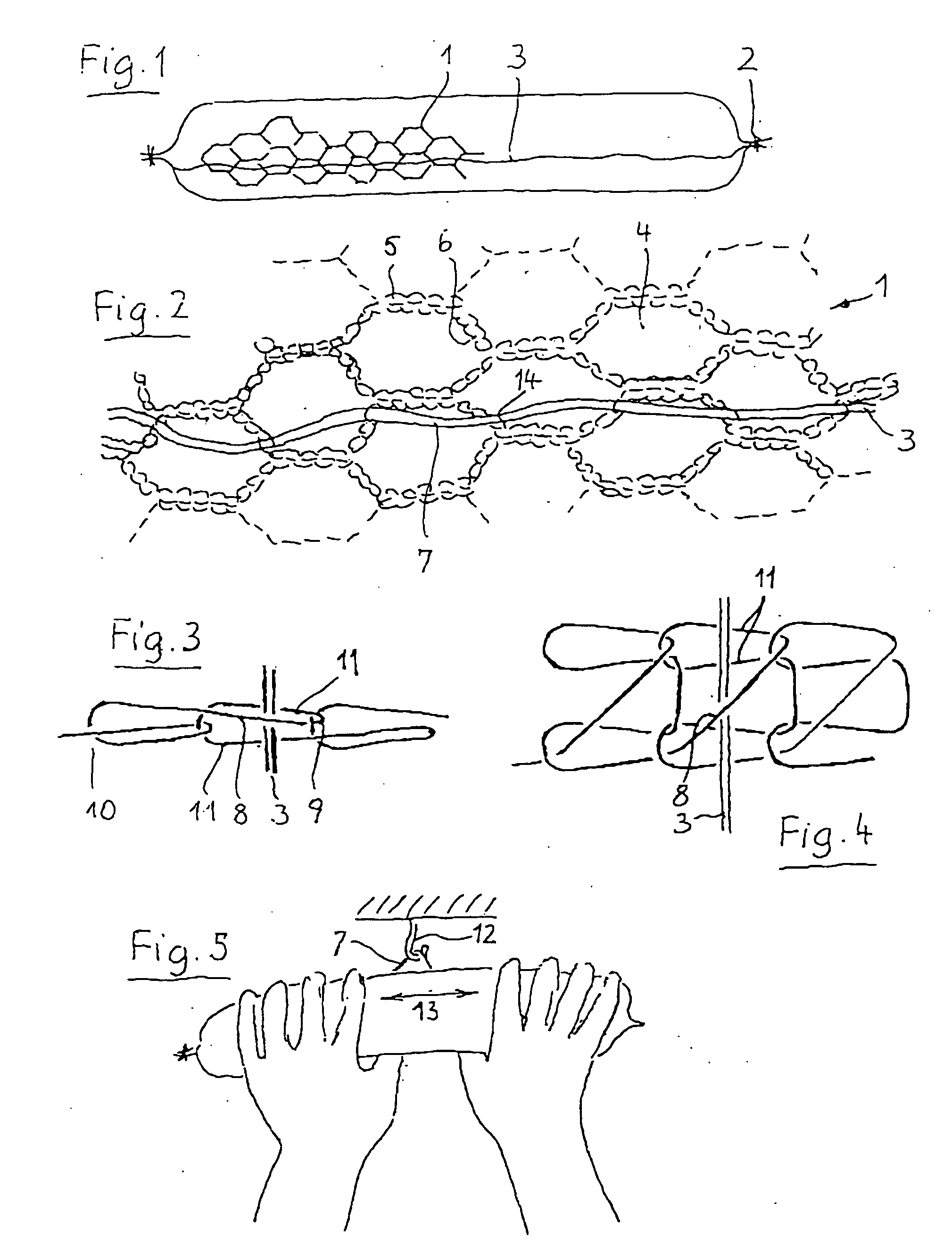Wrapping net for sausages and method for production thereof
a technology for wrapping nets and sausages, applied in the field of wrapping nets for sausages, can solve problems such as severed strands, and achieve the effect of convenient opening of encasing nettings
- Summary
- Abstract
- Description
- Claims
- Application Information
AI Technical Summary
Benefits of technology
Problems solved by technology
Method used
Image
Examples
Embodiment Construction
[0019] The sausage according to FIG. 1 is contained in a sausage casing which is sealingly surrounded on the outside by an encasing netting 1. The sausage casing and the netting 1 are closed together at the ends, for example by means of clips 2. A tear-open thread 3, which is provided to run continuously lengthways in the encasing netting 1, is also bound into the clips in a tension-resistant manner.
[0020] The encasing netting 1 comprises honeycombs 4 which are formed by longitudinal strands 5 and transverse strands 6. It is preferably a double-rib or warp-knit fabric which is produced as a tube and in which the transversely running strands 6 are knitted as a fringe (aerated stitches) and the longitudinally running strands 5 are knitted as a tricot. The longitudinally running strands 5 expediently comprise a plurality of (for example, 5) stitches, so that they have some longitudinal extension and thereby make sufficient area available for an adhesive connection to the sausage casin...
PUM
| Property | Measurement | Unit |
|---|---|---|
| elongation at tear | aaaaa | aaaaa |
| elongation at tear | aaaaa | aaaaa |
| length | aaaaa | aaaaa |
Abstract
Description
Claims
Application Information
 Login to View More
Login to View More - R&D
- Intellectual Property
- Life Sciences
- Materials
- Tech Scout
- Unparalleled Data Quality
- Higher Quality Content
- 60% Fewer Hallucinations
Browse by: Latest US Patents, China's latest patents, Technical Efficacy Thesaurus, Application Domain, Technology Topic, Popular Technical Reports.
© 2025 PatSnap. All rights reserved.Legal|Privacy policy|Modern Slavery Act Transparency Statement|Sitemap|About US| Contact US: help@patsnap.com


